You can create stunning in-camera effects using the best camera filters. Rod Lawton and the AP team pick NDs, polarisers, ND grads and more.
Camera filters may sound like a relic of a bygone era – surely we can just do it all with Photoshop these days? But the truth is, as any seasoned photographer will tell you, that camera filters are vital for producing effects that can’t easily be replicated in software. They can modify the intensity and quality of light before it hits the camera sensor (or the film negative, for that matter), and this can lead to all sorts of interesting and useful effects.
Reasons for using filters
For example, neutral density or ND filters reduce the amount of light coming into the sensor. This allows for the use of longer shutter speeds than would otherwise be possible, meaning you can blur the motion of a moving subject without letting in too much light and blowing out your highlights. Polarisers, meanwhile, reduce the glare of sunlight and light from reflections, delivering richer colours and making it possible to see through reflective surfaces, everything from shop windows to lakes and rivers.
These types of filters tend to be very popular in landscape photography, and indeed, we have dedicated guides to the best filters for landscape photography, as well as a step-by-step on how to use filters for better landscapes. In this guide, we’re including all different types of filters; as such, we’ve suggested a B&W filter, a light-pollution filter for astrophotography, a close-up filter and plenty more.
New to all this? Don’t worry – have a look at our guide on how best to go about choosing a camera filter towards the end of the article…
The quick list
Here are our recommendations of the best filters you can buy. Make sure the filter you buy is the right size for your lens before buying:
- Best circular ND camera filter set: Kase Revolution – buy now
- Best circular ND filter: LEE Filters Elements Little Stopper – buy now
- Best polarising camera filter: Hoya Fusion CIR-PL – buy now
- Best square ND camera filter: LEE Filters Big Stopper – buy now
- Best variable ND filter: PolarPro 82mm Peter McKinnon Signature Edition II Variable ND – buy now
- Best graduated camera filter: Cokin Z-Pro Expert Kit – buy now
- Best UV / lens-protection camera filter: Hoya Protection Filter –buy now
- Best light pollution camera filter: Kase Wolverine Neutral Night – buy now
- Best infrared camera filter: Hoya R72 Infrared Filter – buy now
- Best black and white camera filter: Tiffen Red 25 – buy now
- Best close-up camera filter: Hoya HMC Close-up Filter Set – buy now
- Best soft focus camera filter: H&Y Revoring Black Mist filter 67-82mm – buy now
Read on for full details of each filter, with price guides, size options and our technical team’s recommendations…
Best circular ND camera filter set: Kase Revolution
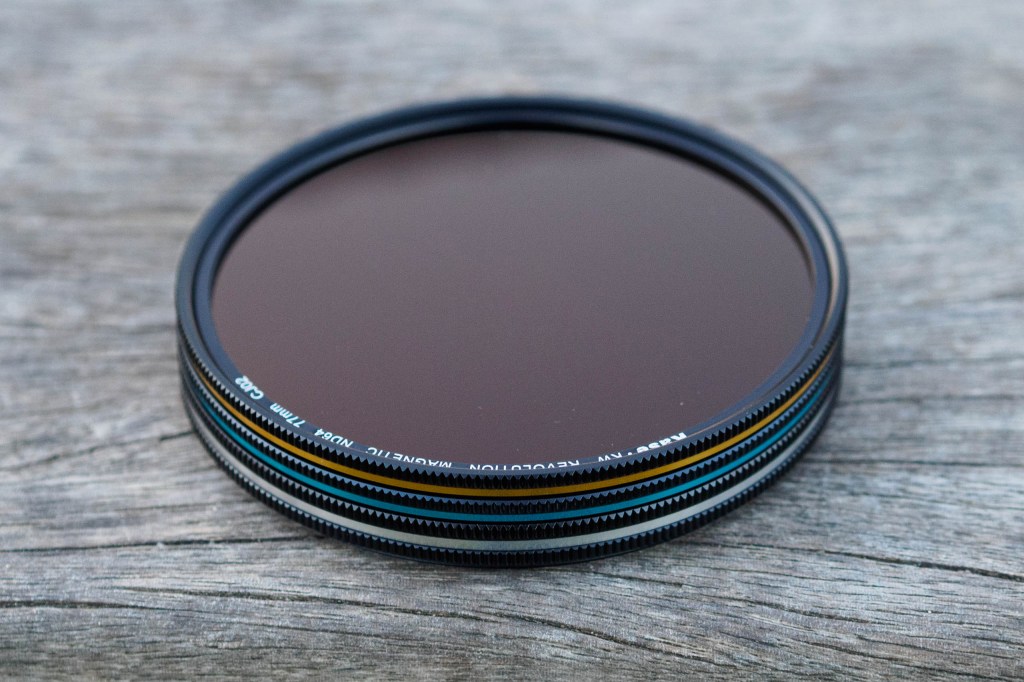
Amateur Photographer verdict
Kase has taken its original magnetic circular filters and retained all the same attractions, while adding some genuinely useful updates and maintaining the same price.- Optically exceptional
- Easy to swap
- Quite expensive
- And smaller thread adapters cost extra
At a glance:
- Sizes: 77-95mm (step-up adapter rings available)
- Price: $199-330 / £230-320 (multi-filter kit prices)
When you’re testing a filter, it makes sense to put it through the wringer. We gave the Kase Revolution filters something of a baptism of fire by trying them out on the Sony A7R IV, a full-frame mirrorless camera with a whopping 61MP of resolution. If you want to measure the optical effect a set of filters has on an image, this is the camera to do it with – and the Kase Revolution passed the test with flying colours.
Optical quality
The optical quality is hugely impressive, and we detected no real loss of detail. If you stack a bunch of the filters together on a really sharp lens, you’ll notice a little vignetting, but not enough to seriously ruin an image. There’s also a slight warm colour cast, something that’s easy to correct in software should you wish to.
Swap in seconds
These filters operate via a clever magnetic attachment system; simply screw the magnetic adapter onto the front of your lens, and you can quickly take filters on and off, or swap between them in seconds. We tested out the Pro kit, meaning we got an ND8, ND64 and ND1000, as well as a polariser. They’re colour-coded (silver for polariser, blue for ND8, gold for ND64 and red for ND1000), though there’s no clear logic to the colour choices so it’s not exactly intuitive. The fact that we have to get into the colour coding to find something to criticise should indicate to you how good these filters really are.
Read our Kase Revolution Magnetic Circular filters review
Best circular ND filter: LEE Filters Elements Little Stopper
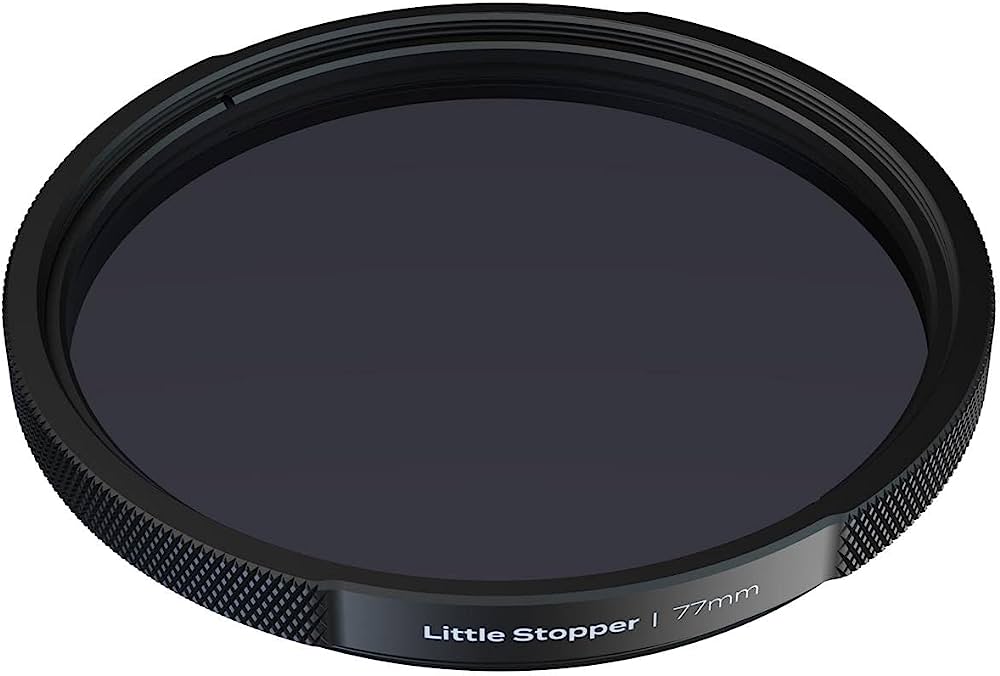
Amateur Photographer verdict
The iconic Lee Filter in a circular format. Sturdy built with anodized aluminium and good grip. It provides 6 stop reduction and features advanced coatings on the glass elements.- High-quality design
- Stackable with other filters
- Comes with protective case
- Only 67mm, 72mm, 77mm and 82mm available
At a glance:
- Sizes: 67-82mm
- Price: $215 / £169 ( 77mm size)
LEE Filters was famous for years for its powerful light-stopping filters that were exclusively available in square format (of which you’ll see more shortly). It was music to the ears of many landscape photographers when the company announced it was finally going to release circular versions of its popular ND filters, naming them the ‘Elements’ range.
Superb construction
The Elements Little Stopper reduces incoming light by six stops. While it produces less dramatic an effect than the famous 10-stop Big Stopper and LEE Filters 15-stop Super Stopper, it’s built with no less attention to optical quality. The filter is constructed from a high-end optical glass. There’s very little of the pronounced vignetting effect you sometimes get with cheaper filters. The frame of the filter is constructed from robust black anodized aluminium, with knurled edges for better grip in all weathers. There are a number of sophisticated coatings on the glass elements, including scratch-resistant and anti-reflective, as well as hydrophobic and oleophobic for easier cleaning.
Vs the Big Stopper
As mentioned, the six-stop light reduction of the Little Stopper is less pronounced than that of its 10-stop sibling, meaning you can use it to more subtle effect. LEE Filters recommends it particularly for the very beginning and very end of the day, when light is low and the 10-stop reduction of the Big Stopper might simply be overkill. The LEE Elements filters are also stackable, meaning you can combine their effects for ultra-powerful light reduction if needed.
Handily, the Elements Little Stopper also comes with its own protective hard case. It’s available in only four sizes, which isn’t as many as some other filter options.
Best polarising camera filter: Hoya Fusion CIR-PL

Amateur Photographer verdict
Can easily attach to the lens’s filter ring and reduce reflection and glare off of glossy and reflective surfaces.- Polarisers cut glare and reflections in a way you can’t replicate digitally
- Can be expensive to buy, especially in larger sizes
- Effect varies across the frame with wider-angle lenses
- Overall darkening affects exposures
At a glance:
- Sizes: 37-82mm
- Price $34-89 / £143
The Hoya Fusion circular polarisers attach directly to the camera’s filter ring, so you need to select the correct size – they are available in common filter sizes from 37-82mm. You can also get polarisers to fit square filter holders from many other filter makers.
Polarising filters have three main effects. They darken blue skies, they cut through reflections in water, glass and on polished surfaces, and they increase colour saturation in glossy, reflective surfaces, which can be as diverse as man-made objects or leaves in a landscape.
It’s possible to replicate the blue sky effect in software, but not the other two. Polarising filters change the properties of the light itself and the way that it’s reflected by the surfaces of the objects in a scene. If you need to cut through the glare off a car’s paintwork or windows, or off the surface of a lake or river, a polarising filter is the only thing that can do it. Software won’t help you.
Best square ND camera filter: LEE Filters Big Stopper

Amateur Photographer verdict
The Lee Big Stopper ND filter provides excellent colour rendition while delivering powerful 10 stop reduction. It is an essential for landscape photographers- The only way to create longer exposures and movement blur in bright light
- Some cheaper brands can cause a colour shift
- Darkened viewfinder image (DSLRs) can be hard to see
- Long exposure times demand a tripod
At a glance:
- Fittings: square filter holder (this version) or circular (various sizes)
- Price $150 / £97
This is the legendary LEE Filters ‘Big Stopper’, a neutral density filter that cuts the light passing through the lens by 10 stops, allowing long exposures of many seconds even in bright daylight. This is the version designed for Lee’s square filter system, but you can also get circular versions to fit straight onto a lens.
Reducing the light might sound like a crazy thing to do when most photographers want fast shutter speeds to freeze action and avoid camera shake – but these filters are designed to deliberately lengthen exposures so that moving subjects such as water or clouds become blurred. They can also be used successfully in busy urban scenes when you’d like to prevent people from ruining your shot.
The only way to achieve this is with long exposure times of several seconds or even longer, and the only way to get this in regular daylight is with an ND filter. Obviously this means using a tripod, but this landscape blur effect has become such a standard ‘look’ that many photographers will regard it as an essential add-on.
Best variable ND camera filter: PolarPro 82mm Peter McKinnon Signature Edition II Variable ND – 2-5 Stop
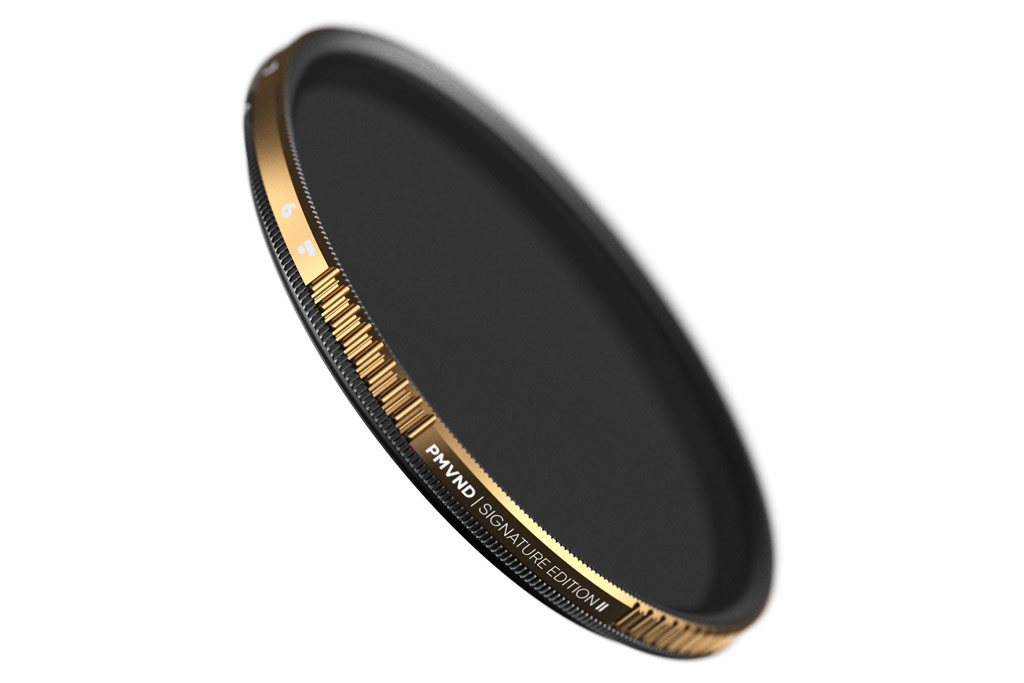
Amateur Photographer verdict
The variable darkening effect is especially useful in video work, while useful for still photography too, be wary of the ‘X’ effect- Useful in video for adapting to changing light
- Limited adjustment range of 3-4 stops
- ‘X’ cross-polarisation effect with wider focal lengths
At a glance:
- Sizes: 67-95mm
- Price $250 (82mm) / £239
Variable ND filters might seem a potentially useful alternative to regular ‘fixed’ ND filters, but actually they have a different purpose. This PolarPro Peter McKinnon Signature Edition is at the premium end of the market – cheaper alternatives are available. It offers a 2-5 stop darkening effect, but you can also get a 6-9 stop version.
The side-effects
Variable ND filters work by combining two polarising filters which can be counter-rotated to produce a variable darkening effect. So far so good. But this cross-polarisation has side-effects that limit its usefulness. If you push it too far, you get a kind of soft ‘X’ shape in the middle of your images that’s impossible to edit out. Variable ND filters can only operate effectively within a relatively narrow 3-5 stop window, and the wider your lens’s focal length, the quicker this X-effect appears.
That’s the bad news. For stills photographers, variable ND filters are a very poor substitute for ‘fixed’ ND filters because they don’t offer enough strength and because of the potential for that cross-polarised ‘X’ effect.
For videography
But for videographers it’s different. Here, a variable ND can be extremely useful for adapting to changing light without altering the aperture (iris) value and hence the depth of field, or the shutter speed/shutter angle.
This is such an important control that many high-end cinema cameras have switchable ND filters built in. For cameras that don’t, a variable ND filter is the next best thing.
Best graduated camera filter: Cokin Z-Pro Expert Kit
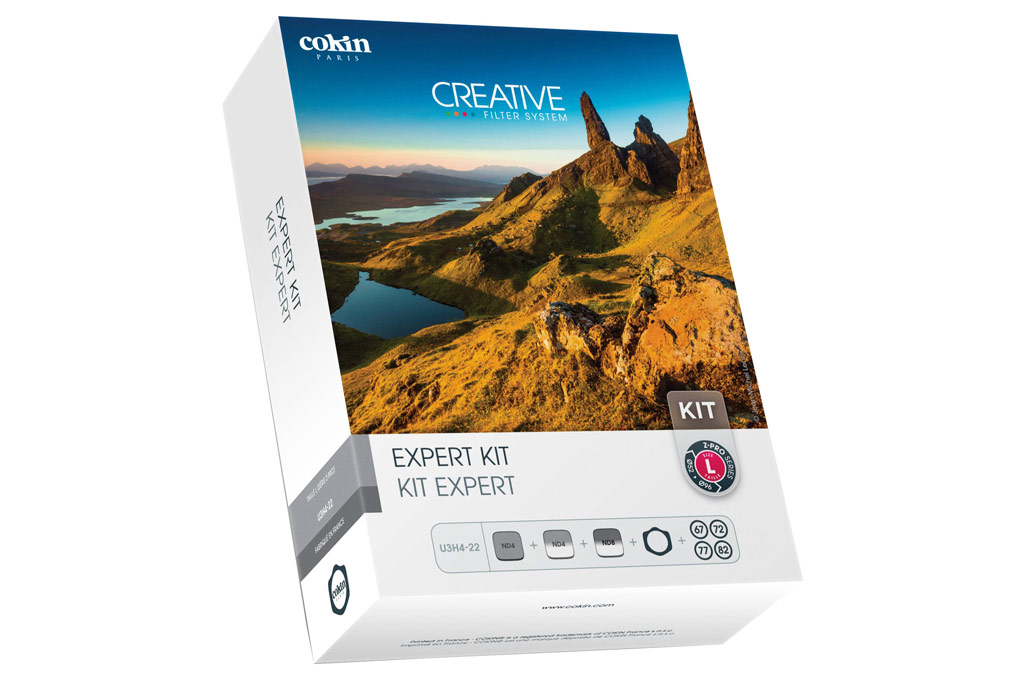
Amateur Photographer verdict
Little outdated as you can create a graduated effect in post, however if you like to get it right in camera and don’t mind fiddling with the filter holder and adapter the Z-Pro is the kit for you- Grads can bring bright skies within the sensor’s dynamic range
- Less editing work needed later
- Grads need bulky square filter systems
- Hard to ‘uncorrect’ in software
At a glance:
- Sizes: 100mm filter holder, other sizes available
- Price $155 / £249
The Cokin name will be instantly familiar to those brought up on film SLRs, and it’s still going strong. This Z-Pro Expert Kit contains a selection of landscape filters plus a filter holder and lens adapter rings – but you can get graduated filters and holder separately too, and in various kits.
Graduated filters are the easiest type to reproduce digitally – provided you capture an image with enough highlight detail in the sky. Usually, if you shoot raw files and are careful with the exposure, this will give you all the extra sky detail you need. You will be able to bring this out in your photo-editor and with a lot more control than a graduated filter fitted over the lens.
The disadvantages
There are advantages to using a graduated filter on the lens, to be sure, but there are some serious disadvantages. First, the darkening effect will be ‘baked into’ your photo. You will be able to modify it later in software, but it may be more complicated than with a ‘straight’ image. A graduated filter will produce a ‘soft’ or a ‘hard’ gradation which you may have to work around later.
Second, graduated filters will also darken buildings or other objects that jut up into the sky. They are pretty blunt tools!
On the plus side, a graduated filter can bring a bright sky within the dynamic range of your sensor, and can save you some editing work later if you don’t like spending time in Lightroom or Photoshop. You will, however, need a square filter system, with all the fuss that involves.
Best UV / lens-protection camera filter: Hoya Protection Filter
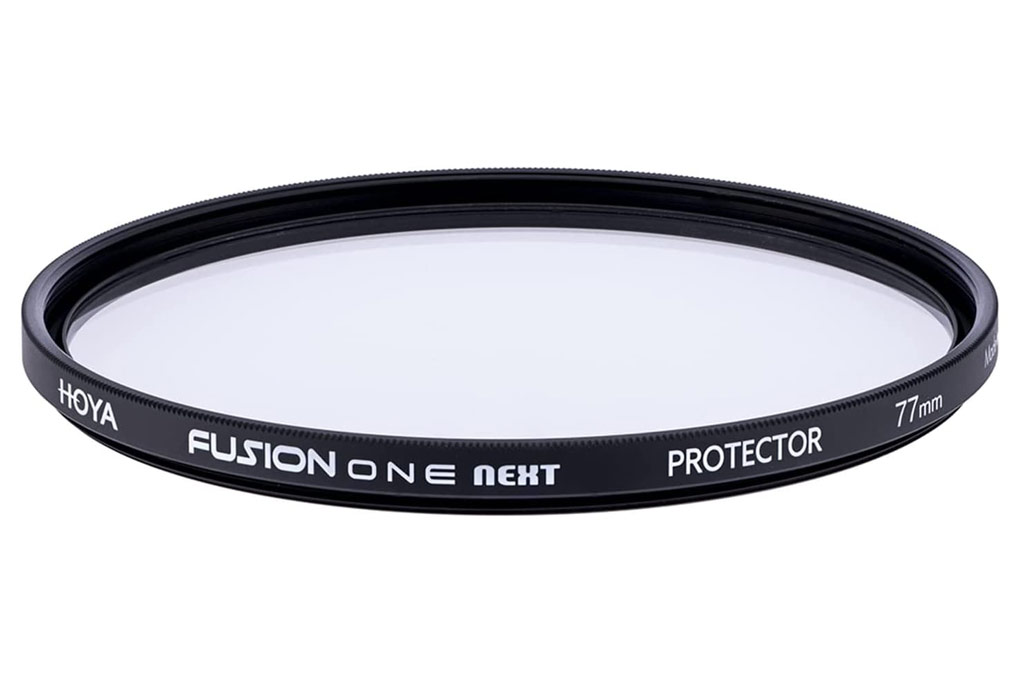
Amateur Photographer verdict
These UV or Skylight filters are a must, keep it on your lens all the time and protect your precious glass from scratches and knocks.- Protection against knocks, scratches and salt spray
- Protection against knocks, scratches and salt spray
- Some theoretical affect on image quality
At a glance:
- Sizes: 37-82mm
- Price $25-83 / £24-45
Here’s a filter type that’s designed to have no optical effect at all!
Lenses are expensive and we’re all acutely aware of that – especially if we get a bit of grit or sea salt stuck to the front element or buy a lens with what the previous owner called ‘cleaning marks’. That’s scratches in the coating, by the way.
So we all probably think from time to time about lens protection, and the simplest and most popular solution is a UV or ’Skylight’ filter, or these days just a plain, clear ‘protection’ filter that is not designed for any image improvement but has the more definite advantage of protection against knocks, scratches or other accidents.
It’s unlikely that modern sensors need UV filtering or ‘Skylight’ filters to warm up blue-sky landscapes, but having an extra layer of protective glass in front of your lens may be reassuring. It might also affect the image quality, but hopefully not by much.
Best light pollution camera filter: Kase Wolverine Neutral Night

Amateur Photographer verdict
An effective way to filter out the wavelength of hazy yellow artificial lights in urban environments when shooting astrophotography- Enables ‘clean’ night shots in urban environments
- Not all light pollution can be filtered out
At a glance:
- Fittings: Square filter holders (pictured) or circular
- Price $175/ £139
Anyone who has spent some serious time working at astrophotography will know what a pain light pollution can be. A decidedly modern-day problem, light pollution refers to an excess of artificial light making it difficult or impossible to photograph (or even see) the stars in the night sky. If you live among the wan, yellow haze of streetlights, or in the 24-hour glare of a modern city, you probably don’t spend much time stargazing.
As an alternative to driving out to a rural area every night, consider this light pollution filter by Kase. The Wolverine is available in circular and 100mm square configurations, and it works by filtering out light of specific wavelengths, targeting the ones produced by artificial lighting. The idea is that only the natural light of the stars and moons is left. While it doesn’t solve the problem entirely, the Kase Wolverine does radically reduce the orange glow of streetlights (it’s less effective with LED lighting). Constructed from tough, scratch-resistant glass, it’s a well-made filter that improves the possibilities of astrophotography in urban environments.
Best infrared camera filter: Hoya R72 Infrared Filter

Amateur Photographer verdict
A cheaper solution for shooting infrared images as you don’t have to irreversibly convert your camera.- One way to create surreal infrared effects without camera modifications
- Much longer exposures
- Effectiveness depends on your sensor’s infrared sensitivity
At a glance:
- Sizes: 46-77mm
- Price: $39-83 / £42-73
Infrared photography was popular amongst film users because you could get black and white and colour films especially sensitised for infrared wavelengths, which are much longer than those of visible light.
You can get infrared photos on smartphones, and get infrared filters for digital cameras, but there is a problem. Sensors are specifically designed with infrared ‘cut’ (blocking) filters, so all that infra-red filters can do is block the visible light, allow infra-red through and trust that the camera sensor still has enough infra-red sensitivity to make an image.
The likelihood of success depends on the camera and sensor, but an infrared filter like the Hoya R72 infrared series is certainly a cheaper alternative to try if you don’t want to get your camera converted to infrared. There are companies that can do this, but it’s a one-way process.
Best black and white camera filter: Tiffen Red 25
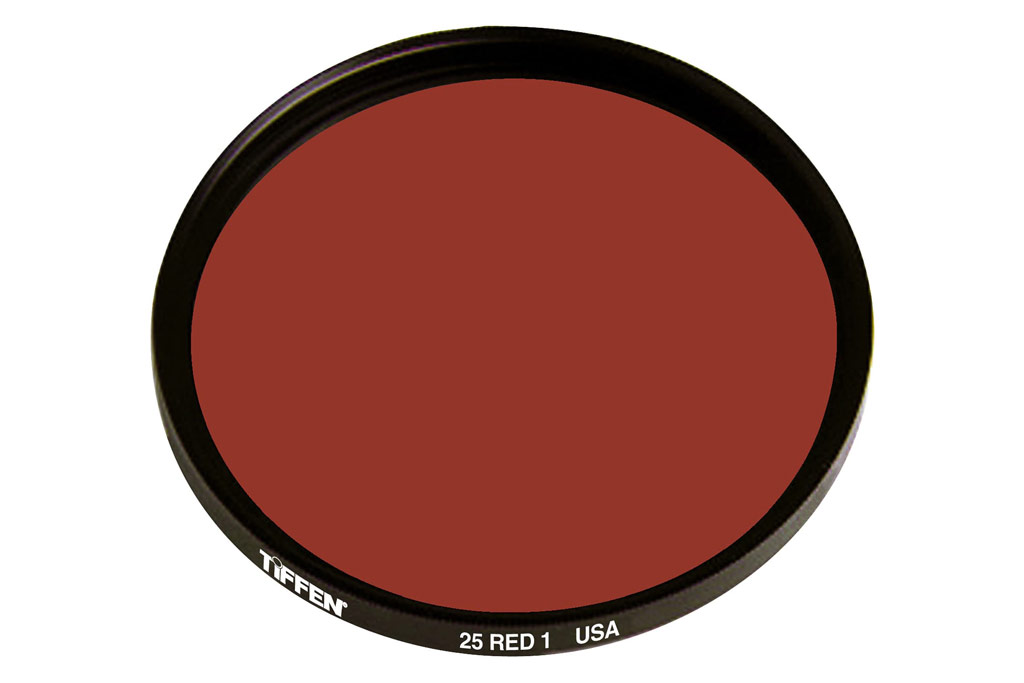
Amateur Photographer verdict
Especially useful for film users who want to create a contrasty black and white image in a cost effective way.- Black and white filter effects without the need for software
- Achieves little than software can’t do
- Unlike software, using B&W filters leaves you committed
At a glance:
- Sizes: 40.5-82mm
- Price $16-49 / £21-59
Black and white film users will be used to using different ‘contrast’ filters, such as red, yellow, orange or green filters to change the way these colours are turned into shades of grey. Yellow, orange and red filters are popular amongst landscape photographers, for example, for darkening blue skies and lightening vegetation.
In principle, you can still use these filters on a digital camera, and you’ll see the effect if the camera is set to black and white mode. However, because of the way sensors work, using a red filter, for example, means only the red photosites on the sensor will receive any light, so the quality will not be the same as you would get from a red filter with black and white film.
In fact, using a black and white filter when you shoot will not achieve anything you couldn’t do later in software with ‘channel mixing’ techniques, though you will at least see the effect live in-camera. With that in mind, you might not want to spend too much on black and white ‘contrast’ filters, so the Tiffen range is a good start (filter colours other than red are available).
Best close-up camera filter: Hoya HMC Close-up Filter Set

Amateur Photographer verdict
You can extend the minimum focus distance of your existing lens and essentially turn it into a macro lens without spending a fortune. Even so, note that quality is likely to drop.- A cheap way to get close-ups!
- Can be used in combination for a greater effect
- Optical quality won’t be great
At a glance:
- Sizes: 46-77mm
- Price $56-92 / £49-90
Close-up filters, or close-up lenses, are a quick and simple way to photograph small objects when your camera lens can’t focus close enough. They are typically sold in sets of three with different ‘diopter’ settings, which is the language usually used for spectacles and reading glasses. This Hoya close-up filter set is pretty typical, and probably as much as you would want to spend.
Effectively, they apply a fixed close-up correction, and the effect and the possible magnification will depend on the lens you’re using and how close it can focus in the first place.
In principle you can use close-up lenses in combination to get even more magnification, but because these are generic optical corrective lenses, you can’t expect the same quality as a regular camera lens, and this will only get worse if you use them in combination. For casual use, though, they are a much cheaper option than a macro lens.
Best soft focus/Black Mist camera filter: H&Y Revoring Black Mist filter 67-82mm

Amateur Photographer verdict
A practical filter with adjustable filter thread that creates a soft-focus ‘artisan’ lens effect. Can be useful when shooting portraits in high-contrast lighting.- Soft highlights and reduced contrast
- Effect visible ‘live’ while you shoot
- Can’t be easily undone in software
At a glance:
- Sizes: 46-62mm, 58-77mm, 67-82mm
- Price $119 / £109
Revoring is one of the newer names in filters and gets its name from its unique spring-loaded filter attachment that can fit a range of filter thread sizes, not just one.
Revoring is probably best known for its combined polariser/variable ND filters, but it also makes a series of Black Mist filters in strengths from 1/2 to 1/8.
Soft focus filters have gone out of fashion somewhat as photographers can now create a soft focus effect with much more control in software – or use some of the newer ‘artisan’ lenses deliberately designed to give a soft effect when used wide open. One old trick is to smear vaseline over a clear filter, or stretch stockings over the lens. This looks odd but does actually work!
What we’re seeing now, though, is this new type of ‘black mist’ filter which does give some of the effect of a soft-focus filter and reduces image contrast at the same time, so could be particularly useful for portraits shot in high-contrast lighting, for example.
Frequently Asked Questions
Do photographers still use camera filters?
Absolutely they do. It is of course true that Photoshop has made filters less essential than they once were. However, there are multiple filter types that produce effects that are difficult or impossible to replicate digitally.
Examples include polarizing filters, ND filters, infrared filters, light pollution filters and close-up filters. These all change the behaviour of the light, the intensity of the light and the light spectrum reaching the sensor.
There are other filter types which can be replicated digitally, but that you may still find useful to use, either because they save editing time later or because they help you visualise the end result while you’re shooting, rather than having to guess at what you can achieve later. Examples here included graduated filters and black and white ‘contrast’ filters.
Camera filters are particularly commonly used in landscape photography, where slower shutter speeds are often used to create specific effects.
Can you stack camera filters?
In most cases, yes you can. Circular filters can be stacked on top of each other, either to intensify one effect or add multiple effects at once. For instance, you might be shooting an image of a lake, and want to reduce the amount of light coming in so you can slow down your shutter speed to get a smooth look on the surface of the water. That necessitates an ND filter. But then, you also want to cut down on the reflections that are being created by the high summer sun – so you add on a polariser. Ta-da – both effects in one shot!
However, it’s important to remember that there are drawbacks. Adding an extra layer of glass will always have some impact on image quality, and this goes double if you’re adding two filters. Essentially, any common effect that is generally introduced by filters, such as vignetting (darkened corners of an image) will be compounded by adding more than one. So try to resist the temptation to go wild! Also, more expensive filters will have less of an impact than cheap ones, so if you’ve gone for budget filters, it might be best to stick to using one at a time where possible.
Are camera filters necessary?
The short answer: it depends. No camera filter is necessary in the sense that you can always take a photo without one, and many photographers have no use for them. It really comes down to what you like to shoot, and how you treat your equipment.
For instance, a UV filter generally doubles up as a protective filter, and many photographers leave one attached to the front of their lens at all times as it generally has a minimal impact on image quality. This is not strictly speaking necessary – until the moment you accidentally drop your £1,500 lens with the front element facing down. Then you may find that the UV filter on the front was very necessary indeed.
There’s also the fact, as we’ve said several times, that if you want to achieve certain effects, a filter is the only real way to do it. You’ll never replicate the reflection-cancelling effect of a polarizer; you need to use a polarizer. There’s also not really a way to handle a sky that’s much brighter than the ground, beyond using an ND grad.
How do you clean camera filters?
Just like your lenses, most camera filters are constructed from high-grade optical glass, with advanced coatings on the outer surface that are vulnerable to rough treatment. As such, when it comes time to clean your filters, you want to be a little more gentle than just smearing household cleaner on a cloth and wiping it.
It’s best to take the cleaning process in stages. The first step is to remove any larger particles of dust or dirt; the best way to do this is to blow them away with a compressed-air rocket blower or similar device. Once this is done, you can apply some lens-cleaning solution to a cloth (ideally a microfibre cloth, or a lens tissue) and then gently rub the surface of the filter in circular motions, working from the centre outwards.
This isn’t something you have to do regularly – we’d recommend only cleaning the filter when it actually needs it. Too much cleaning may introduce more problems than it solves!
How do I choose a filter for photography?
Filters come in two main types: circular filters which attach directly to the lens, and square filters designed to be used in a filter holder screwed onto the lens. Both have their pros and cons.
Round/circular filters are simpler to use, but you have to get a filter size that matches your lens’s filter thread. If you want to use filters with a number of lenses you face the possibility of having to buy a different-sized filter for each.
There are ways around this, for example buying a filter big enough for all your lenses and then using inexpensive ‘stepper’ rings to fit the filter to smaller ones. There’s also the interesting spring-loaded Revoring system which takes a single-size filter but can adapt to different-sized filter threads. Another option for users of Canon EF lenses on RF bodies is the ‘drop-in’ filter, which is inserted between the camera and lens – see our piece on the pros and cons of drop-in filters for mirrorless for a lowdown on how this all works.
Limitations
Even with these workarounds, round filters have another limitation. They are ideal for some filter types, such as polarisers or ND filters, but no good at all for others that require careful angling and positioning, notably graduated filters. They’re not great if you want to combine filters, either, because while you can screw one round filter on top of another, this increases the risk of vignetting, or ‘corner shading’ with wide-angle lenses.
Square filter systems are popular with enthusiast and professional photographers because they allow you to combine two or more filters such as a polariser, a graduated filter and an ND filter – a combination often used in landscape photography. There are still some differences between square filters systems though. Some offerings such as the PolarPro Summit Landscape Filter System are based around the idea of using filter frames that slot into a square filter holder.
Filters that come with their own filter frame are a good idea. Not only can they help prevent chipping or damaging the filter, it gives them a highly durable and hardwearing feel compared to plastic alternatives. The other benefit that filter frames provide is that they can prevent you handling the surface of the filter itself with grubby, oily fingers, helping to ensure the filter surface remains spotless at all times.
Square filters vs round filters
But the cost can quickly mount up if you choose higher-quality premium filters, and square systems are quite bulky and fiddly to use, since most include a special adaptation for mounting a circular polariser along with the rest. With a square filter system, you can quickly run out of hands, patience and space in your camera bag.
Ultimately, the decision is yours. Round filters are simple but you need to match the size to your lens’s filter ring, and they are no use for graduated filters. Square filter systems give you more scope, but they are fiddly and bulky and best suited to slow and deliberate work not fast-moving handheld photography.
Text by Rod Lawton, with contributions from Jon Stapley & Michael Topham.
Related articles:
- Best filters for landscape photography
- Best camera phone accessories for photography and video in 2023
- Best 100mm square filter holder systems for landscape photography 2022
- The pros and cons of drop-in filters for mirrorless
- Lens filters: how to use them properly
- Magnetic filter systems round-up
- PolarPro Summit Landscape Filter System review
Follow AP on Facebook, Twitter, Instagram, YouTube and TikTok.






